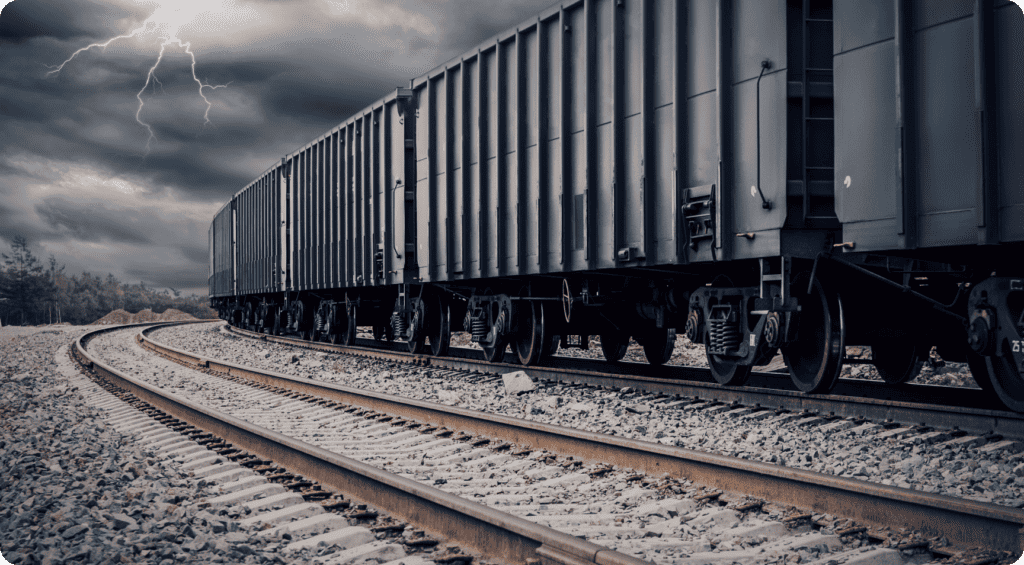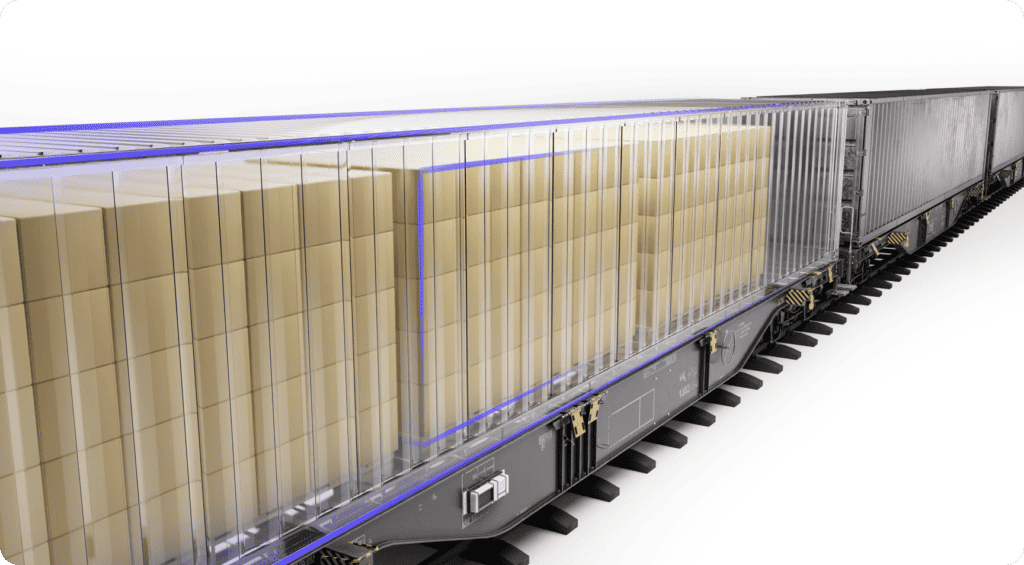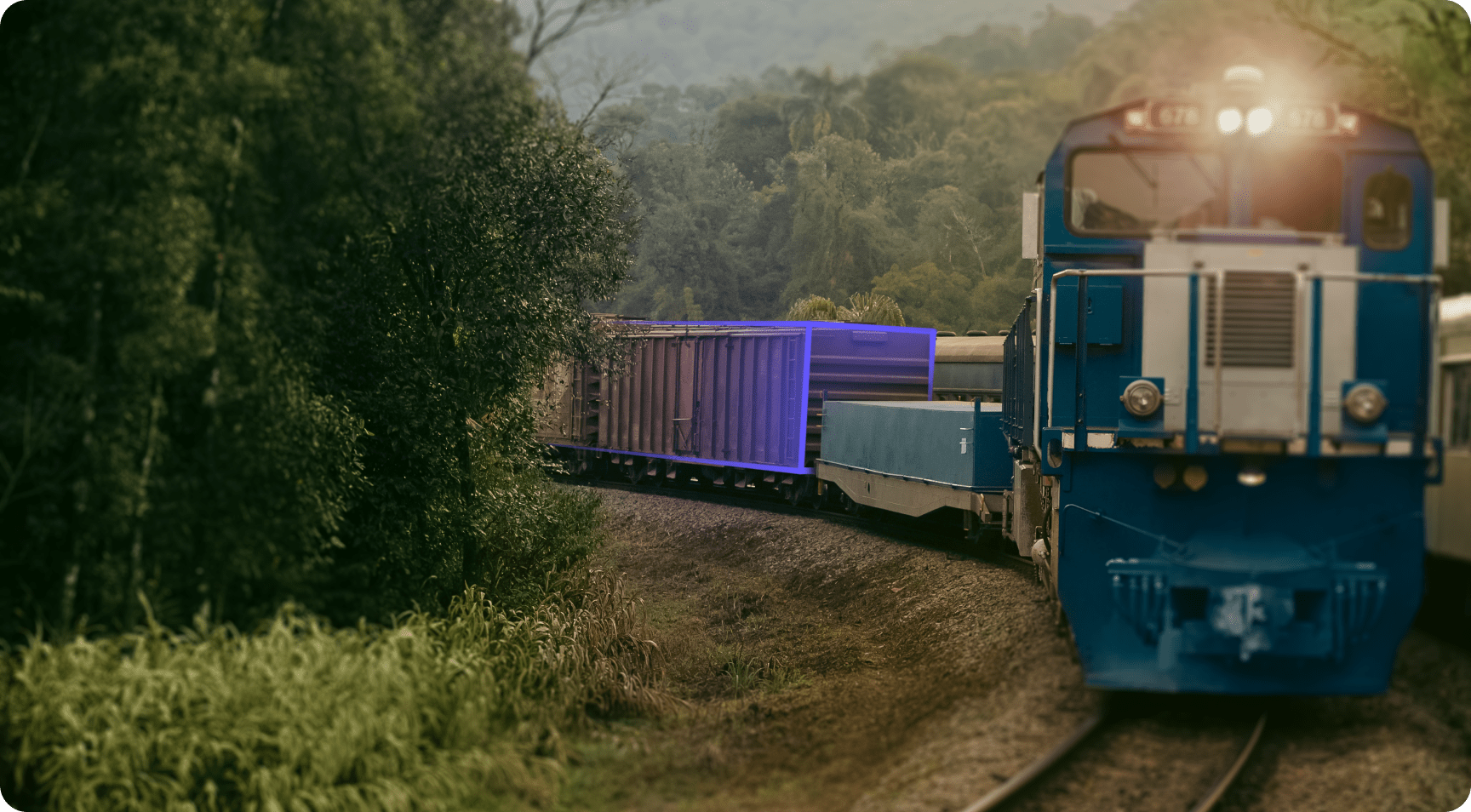A sustainable transportation system is a strong transportation system. Everything from first/last mile optimization to improved data asset utilization to industry collaboration benefits not just rail freight but the entire transportation network we all depend on.
Explore how rail is innovating and inviting new collaboration to level up the industry and provide a more sustainable future of cargo transportation.
Every year, trillions of dollars of cargo are moved across the United States. This freight activity delivers goods, fuels global trade, and keeps the economy going. When freight activity goes well, we don’t think twice about our systems. When there are delays, disruptions and crises, the negative ripple effect is felt by industry workers through to the consumer, impacting the region’s economy. By leaning on the strengths of our cargo transportation system while innovating, collaborating, and receiving wider support, we can anticipate challenges, keep freight moving smoothly and meet demands now and into the future.
Rail is the most sustainable mode of land transportation. Railroads are the most fuel-efficient way to move freight over land and account for just 1.9% of transportation-related greenhouse gas emissions. i On average, rail is 11 times more energy-efficient than trucks and twice as efficient as water and pipeline use on a ton-mile basis. ii
With all its strengths, rail cannot stand alone. With 140,000 miles of track across the U.S. freight network, there are still locations that cannot be accessed. We depend on rail along with trucks, planes, and ships to deliver goods and commodities where they need to go reliably and sustainably. Given the sustainability advantages of rail, it is critical that the supply chain sector continues to leverage rail in the most effective way possible while developing and implementing technologies and innovative practices to optimize processes and prepare for capacity requirements in the future.
Explore how rail is pushing forward to further enhance sustainability, supported by TradeTech, and what factors from new collaboration, innovation and hardware solutions are leading the way.

Rail Becoming Even Stronger
Freight activity in the U.S. is expected to grow 50% by 2050 and will double in value. iii With all its benefits, rail is set to become stronger, more reliable, and more sustainable. Here’s how:
Real-time Monitoring for Reduced
Downtime and Less Damage
The timing of data delivery means the difference between chaos and calm, lives lost, and safety maintained. Real-time monitoring of rail conditions empowers swift and preventative action when needed. A handbrake activation issue, a train traveling past safe speed limits or an abnormal shock as a result of an impact are anomalies where immediate action is needed. IoT is enabling real-time alerts allowing for responsive and timely action to the source, rather than miles down the line.
When hazardous cargo temperatures rise above safe levels, temperature monitors detect the change and send an alert prompting a check to mitigate the situation before a crisis occurs. The impacts of such cases are vast – from combustion to spoiled cargo to compromising the integrity of the railcar and, therefore, of the train. Being alerted to condition abnormalities as they happen not only delivers greater peace of mind but improves the reliability and safety of rail transportation. Operators are empowered to act as needed and improve processes to reduce or even avoid specific issues during future travel.

First/Last Mile Optimization Reduces
Emissions and Energy Consumption
while Improving Safety
A single freight train has the transportation capability of several hundred trucks and compared to trucking, produces up to 75% less greenhouse gas emissions on average. iv
Rail complements a complex cargo transportation system which also includes trucking, shipping, and air transport modes. All work together – depending on the cargo, location, conditions, and delivery requirements – to form the transport network we depend on.
Freight railroads account for approximately 40% of U.S. long-distance freight volume (by ton-miles). This is more than any other mode of transportation. While rail is well-suited for the long legs of the trip, the loading and offloading process must be completed efficiently and safely to support the first/last mile of the journey, typically completed by trucks.
IoT is supporting the optimization of first/last mile transport, further positioning rail as the leader for long-distance land transportation. Overload detection, tilted load prevention, loading assistance and formation planning are a few of the benefits digitalization and IoT are bringing to the industry and benefiting the first/last mile hand-off.
- Overload Detection. Trigger notifications alert relevant parties
about excessive loading at the terminal - Loading Assistance. Keep leadership and crews up to date with
real-time load / unload status updates - Tilted Load Prevention. Prevent derailments by reducing imbalanced loadings
- Formation Planning. Reduce manual effort required to check the order of railcars when preparing the train
When rail is used for long-distance land transportation, we capitalize on the emissions and energy efficiency that rail is known for. The digital solutions improving first/last mile processes not only lead to increased safety and visibility but prepare rail to continue to lead long-distance land cargo transport into the future as demand increases.
Increased Transparency and
Accountability Lead to Higher
Train Freight Utilization
Sustainability, reliability, and visibility go hand-in-hand when it comes to freight transport. From shippers to railroaders to consumers and companies, real-time visibility ensures proper planning.
Rail freight uses manual data, RF scanners, the positive train control (PTC) system, and events that provide a mosaic of data of where train freight cars are in a given journey when connected to a locomotive. The PTC system consists of devices installed on locomotives, along waysides, back-office computers, and communication systems. These locomotive sensors monitor throttle position, track speed, and fuel level.
Railcars not connected to a locomotive and without access to the PTC system lacked the same level of transparency – until now. This is changing with digitalized IoT solutions that work on non-powered assets to deliver unmatched visibility.
The impact of recent tech offerings is substantial. Now rail – the sustainable, low cost, low emission mode – can add improved transparency to its list of benefits. This results in higher train freight utilization, meaning sustainability benefits continue to be amplified.
Improved Data Asset Utilization
Reducing Congestion
The physical capacity of the U.S. transportation system has not kept pace with commerce and freight requirements. The congestion and delays significantly impact passengers and freight shippers. To address the substantial growth in freight transport, there is a need for increased efficiency supported by IoT- riven real-time monitoring.
Technological innovation realized through the capture of data and delivery of usable route insights, and increased use of rail will reduce bottlenecks, ease road congestion, optimize transport, and enhance the economy.
With increased visibility, we can identify underutilized railcars and increase revenue-generating turns. Based on case study research by Nexxiot, the average rail car trip in the U.S. equates 1200 miles, with some assets averaging four turns per year. With increased transparency, asset utilization of a fleet could
make an additional turn per year and increase GTM (gross ton mile) by 25% with the same infrastructure.

Technological Innovation and
Railfreight Collaboration
Innovation in an industry the size of rail does not happen overnight or with a singular effort. Collaboration, a reimagining of concepts like visibility, safety, security and sustainability along with new digital solutions work together to realize rail’s full potential.
Here is what is strengthening and optimizing the industry of rail.
Industry Collaboration
According to the Association of American Railroads, the nearly $80-billion freight rail industry is operated by seven Class I railroads, 22 regional, and 584 local or short line railroads. It provides more than 167,000 jobs across the United States. v
Collaboration and alignment have occurred with the seven Class I railroads to bring increased sustainability, reliability, and operational efficiency across the country.
RailPulse, a coalition aligning the seven Class I railroads, is on the “mission to create a neutral, open-architecture, and industry-wide railcar telematics platform that will help transform rail shipping.” Its members include GATX, Genesee & Wyoming, Norfolk Southern, The Greenbrier Companies, Trinity Rail, Union Pacific, and WATCO.
Mike McClellan, founder of RailPulse, shares, “RailPulse, is intended to create an industry initiative to help accelerate the effective adoption of telematics on rail cars into the North American rail space and do it in a democratic way so that it’s for the benefit of the railroads, Class I’s, short lines, the shippers, and car owners as well.”
With nearly 600 railroads, 1,200 rail cars and 10,000 shippers – security, reliability and sustainability can only be taken to the next level when everyone is invited to the table and included. Mike McClellan explains, “everybody who owns a rail car is going to be invited to be a subscriber or participant in some way with RailPulse.”
RailPulse is aligning forces to solve complex technology challenges and improve the entire rail ecosystem. While further collaboration is required across the wider industry, this is good news for general rail and cargo sustainability and efficiency.

TradeTech Creates
Real-Time Visibility
TradeTech is digitalizing rail assets to collect data and identify meaningful insights – insights that empower proactive decision-making and support more optimized and efficient processes. Reduced downtime, less damage, higher train freight utilization, improved fleet usage, reduced congestion, and increased safety, stem from TradeTech, providing a level of visibility previously not seen.
Nexxiot supports easier, cleaner and safer cargo transportation with IoT devices that empower rail car operators and relevant stakeholders with data, insights and alerts to ensure cargo is transported safely. When things don’t go as planned, Nexxiot’s Connect Intelligent Cloud Platform and the linked alert system deliver information in real-time to allow the rail car owner to act swiftly. Data and insights also mean less time and resources spent waiting at ports or loading docks, increased security and safety of cargo and people, and optimized processes around the first and last mile.
Conclusion
A sustainable transportation system is a strong transportation system. Through the digitalization of rail assets and industry collaboration, we are seeing the rail freight ecosystem improve with benefits to the broader transport web through to the supplier and end consumer.
Sources
i Freight Rail Facts & Figures. Association of American Railroads. (2022, May 24). Retrieved August 8, 2022, from
https://www.aar.org/facts-figures
ii Bureau of Transportation. (n.d.). Energy consumption by select freight transportation modes. Energy Consumption by Select Freight Transportation Modes | Bureau of Transportation Statistics. Retrieved August 8, 2022, from
https://www.bts.dot.gov/browse-statistical-products-and-data/-freight-facts-and-figures/energy-consumption-select-freight
iii Freight Activity in the U.S Expected to Grow Fifty Percent by 2050 | Bureau of Transportation Statistics. (n.d.).Retrieved August 8, 2022, from https://bit.ly/3bFpfqm
iv Freight Rail & Preserving the Environment – Association of American Association of American Railroads. (2022, May). Retrieved August 8, 2022, from https://www.aar.org/wp-content/uploads/2020/06/AAR-Sustainability-Fact-Sheet.pdf
v U.S. Department of Transportation. (2020, July 8). Freight rail overview. Freight Rail Overview | FRA. Retrieved August 8, 2022, from
https://railroads.dot.gov/rail-network-development/freight-rail-overview

